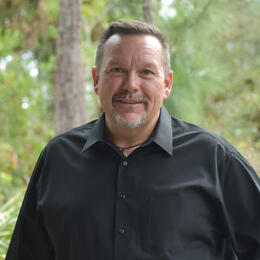For more than a century, Corkscrew Swamp has inspired all who visit to protect and cherish this iconic wetland. In the early 1900s, Audubon wardens protected thousands of nesting birds from the devastation of plume hunters; in the 1950s, community members banded together to purchase and save the original 5,680 acres from logging; and in 1954, the National Audubon Society was chosen to safeguard Corkscrew Swamp in perpetuity as a sanctuary.
WHERE WE ARE GOING
From the forward-thinking conservationists in the 1950s to our current supporters today, the Sanctuary is built on a legacy of conservation champions working to secure a sustainable future for this special place. While we proudly continue this legacy today, we need your help. To secure Corkscrew Swamp Sanctuary’s future as an inspirational nature destination, a safe haven for wildlife, and a leader in the science of saving Florida’s wetlands, we must make foundational improvements to our campus.
Audubon is making strategic investments in the Sanctuary’s campus infrastructure that will strengthen our ability to deliver transformational programming and conduct the science needed to preserve this special place. These include:
CONSERVATION COMMONS
The Sanctuary is a gateway to the Western Everglades and a critical part of the greater Everglades ecosystem. As private landowners with a revered land stewardship program, we are a leading conservation voice at the local, state, and federal level. As new developments and land uses are proposed, Audubon must influence neighbors and regional landowners for best practices that will improve water quality and water flow, provide wildlife corridors and habitat, and reduce drought and flooding events. This conservation hub will house the new John “Jack” Hayworth Western Everglades Research Center, the Habitat Stewardship Operations Center, and Mission Control, serving as an incubator for collaboration between our research and land stewardship teams.
PAUL PACTER OUTDOOR CLASSROOM
Place-based learning at the Sanctuary is life changing for our nearly 2,000 annual program participants. To increase our capacity to deliver educational programming, we must expand and transform our outdoor classroom space and functionality to allow an immersive experience through all seasons. Flexible space will allow us to serve families, younger children from local communities, more camp groups, and students of all ages, as well as increase and expand programs for the public.
NEW VOLUNTEER HEADQUARTERS
Volunteers are a critical component of our mission, maximizing visitor engagement while reducing our bottom line. They lead youth education and public programs, enhance the visitor experience along the boardwalk, assist in the maintenance of our grounds, and work with our prescribed fire team. With 100 active volunteers dedicating more than 9,000 hours of their time annually, our volunteer program provides a cost savings of at least $250,000 each year.
“With an enhanced campus, the Sanctuary will be uniquely positioned to convene stakeholders and share science-based stewardship plans that mitigate the growing impact of development in the region, ensuring long-term sustainability for wildlife and people.” — Keith Laakkonen, Sanctuary Director
To help us reach our fundraising goals, contact Suzanne Bartlett at Suzanne.Bartlett@audubon.org for more information, or check out corkscrew.audubon.org/70-years
This article appeard in the Spring State of the Everglades Report. For more information click here.




